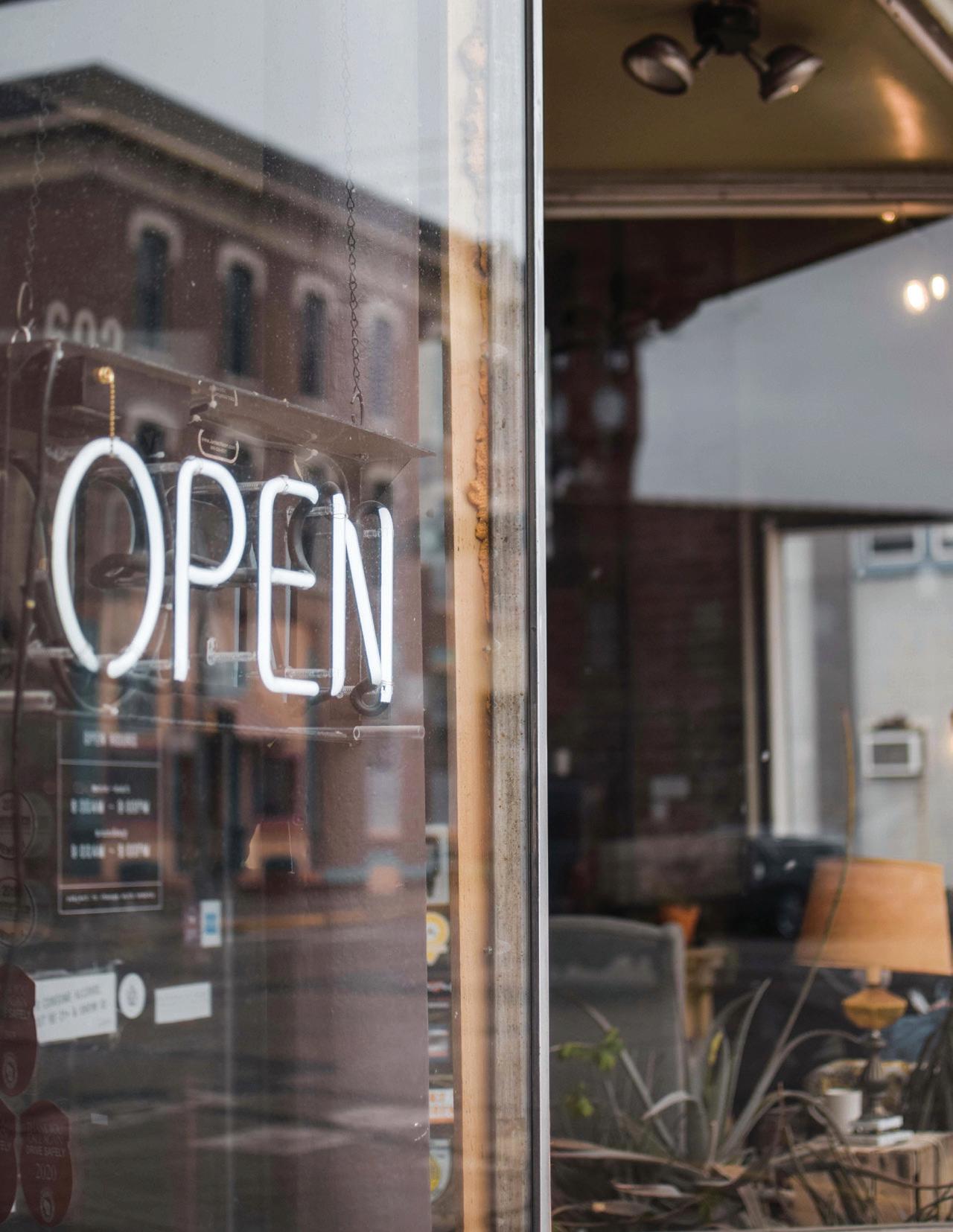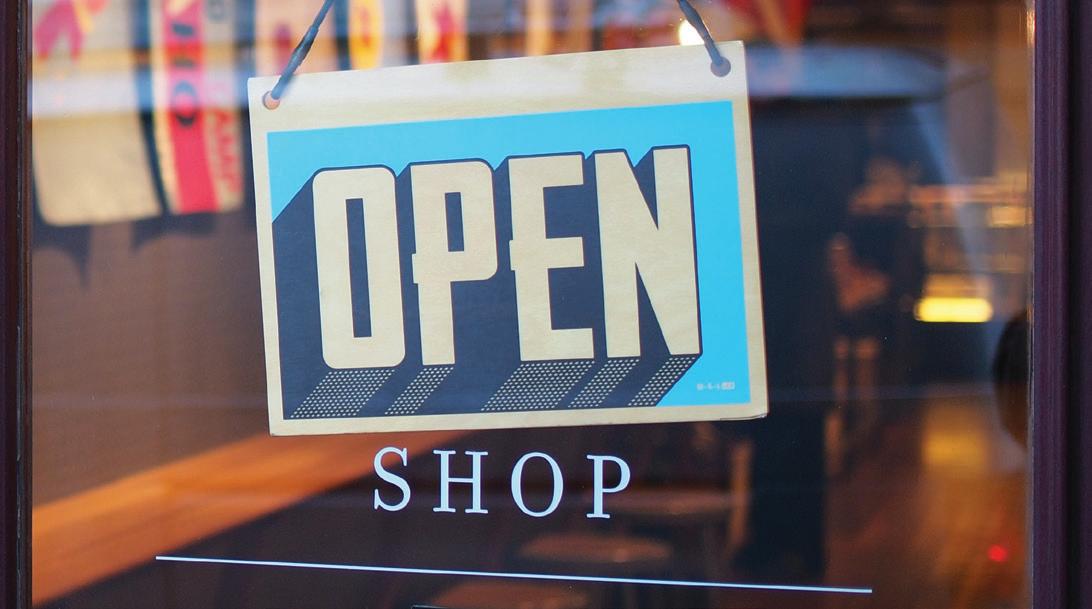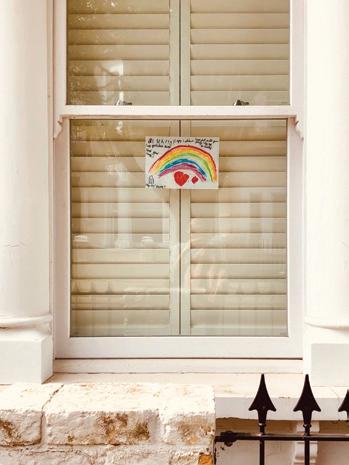
20 minute read
INSPIRE
Inspire DESIGN TRENDS
Top 6 Interior Design Trends for 2021
Advertisement
Joey Kim, Lead Designer and Project Manager for Harts Kitchen and Bath Designs in north San Jose (www.HArtsDesigns.com), and her team have been in the design and renovation industry for more than two decades. During the pandemic, they’ve seen living spaces put to the test like never before. Joey shares the top trends to incorporate into rental properties and homes to improve function, step up style and foster a much-needed sense of security in 2021.
Joey Kim

1. MULTIFUNCTIONAL KITCHENS
“The kitchen has become ever-more important during the pandemic by serving multiple functions. It’s not only for cooking and eating, but also for work/study, crafting and family gatherings. Extending the kitchen area into adjacent areas helps ease that demand: Add island or peninsula seating areas with built-in cabinets and counters, or add dining tables and freestanding islands on casters that can be moved as needed.”
2. SLEEK AND CLEAN LINES
“When it comes to design, the trend is towards modern/ transitional with minimal lines, and organic style focusing on functionality and cleanliness. An unexpected consequence of the pandemic is that clients are passing on previously favored traditionally styled kitchens for those with sleek- and clean-lined cabinets, furniture, counter-edge profiles, lighting and cabinet/door hardware. Think easy to clean with fewer crevices.”
3. SERENE COLORS
“White, off-white and light, cool paint colors will continue to be popular for cabinets and walls this year—especially important in smaller rooms, where they open up the space by reflecting light and creating a spacious feel. Warm grays, beiges and blues are also popular colors. Balance cool grays with warmer colors like taupe gray, off-white Swiss Coffee and beige, accented by rich dark wood stains or dramatic paint contrasts.
Cabinet islands in warm, natural wood stains or contrasting paint colors invite cozy congregating in the kitchen. Lighter-colored counters and backsplashes also visually expand the kitchen and suggest cleanliness.”
5. PRIVATE SPACES
“With more family members residing together at home, carving out sufficient personal space is critical. Divide an extra-large room with a middle wall to create an additional room and provide much-needed soundproofing and buffering. Repurpose unused formal dining rooms; finish basements, attics, and garages; or build ADUs (granny units) into more useful home gyms, music rooms, craft rooms, meditation rooms or home salons.
Since working remotely will be expected for a while, creating a comfortable designated work area will ensure productivity and maintain a healthy work-life balance. If room cannot be found for a work desk, an unused closet can serve double duty as a desk area. Remove bifold or sliding closet doors, place a desk and lamp within the closet and cover the desk space when it’s not in use with a pretty shower curtain or drapery panel hung by curtain rings on a tension or shower curtain rod.”
4. A PLACE FOR EVERYTHING
“Visual clutter creates a sense of disorder and tension, which is not ideal for multiple housemates living together day-in and day-out. Create harmony by clearing counters and storing unused items in neatly labeled bins and cabinets. Books, games, tools and craft items stored in stackable bins use minimal floor space when not needed. Create ample pantry space to stock extra food and supplies so fewer grocery trips are needed. This will minimize virus exposure and help maintain a healthy home.”
6. OUTDOOR SANCTUARIES
“While we’re stuck at home during lockdowns, outdoor areas to relax, chat and read are especially appreciated. Fresh air, sun and soothing greenery provide a healthy sense of well-being. Easily create welcoming outdoor seating areas nestled under overhanging tree branches or under shade/rain covers, like umbrellas and shade sail awnings. Fill empty spaces with container plants, add heating for cozy winter comfort and tack up weatherproof LED string lights for late evening enjoyment. (Just be sure the electrical outlets are properly covered with weather resistant outlet covers.) Plus, beautiful, functional outdoor spaces are at a premium, becoming investments that increase resale value.”
SEALING the DEAL

Closing Apartment Leases During COVID-19
By Joe Bousquin

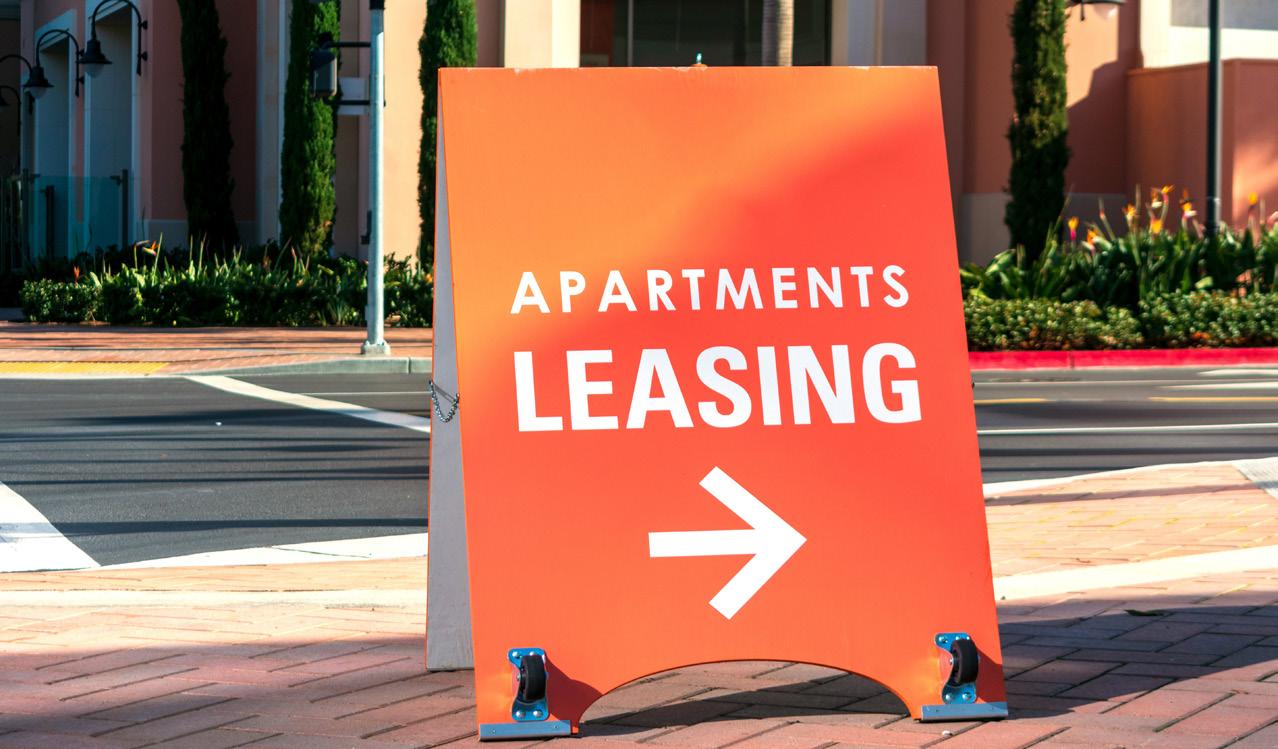
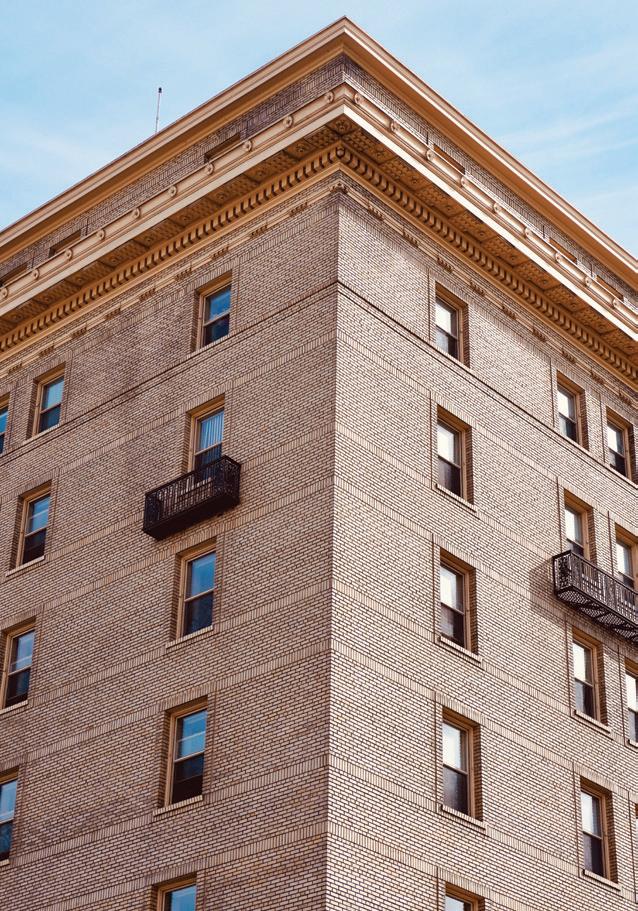
Operators strive to give prospective residents certainty during uncertain times.
In 2020, the basic task of helping prospective residents feel confident that they’re making the right choice—while committing to a 12-month lease or longer— suddenly got a lot harder.
“This is a people business, and a critical part of it is building relationships with prospects,” says Breonna Scaccia, Property Manager at the Wellington, Fla.-based Bainbridge Companies, which operates 17,286 apartments. “But right now, you can’t shake hands. You can’t see facial expressions because of masks. You have less opportunity to connect in person.”
Amanda Miller-Torres, Regional Vice President for Atlanta-based Stonemark Management, says that currently, it’s all about making a personal connection despite the near total reliance on technology. “You’ve really got to learn and feel comfortable with the virtual sales approach, compared to being face to face.”
With uncertainty being the only certain thing about the future, here are the leasing techniques and strategies apartment industry thought leaders are using to fill their apartments today.
From a marketing perspective, operators are relying more than ever than ever on active outreach and interaction with prospective residents.
“We’ve really increased our social media advertising and refined our digital assets and messaging,” says Dana Caudell, President of Property Management at Bainbridge. “People are spending more time on their phones, so it’s a powerful way to reach them. And if they can’t come for an in-person tour, that’s where they’re going to head to get a sense of the community anyway.”
But 2019’s advertising message about over-the-top amenities won’t cut it in attracting renters now. Instead, you’ve got to give them information about exactly what it’s going to be like to live at your community—and the level of safety you offer.
“Our advertising has really pivoted towards answering the FAQs of the day,” says Andre Washington, Regional Marketing Manager for Des Moines, Iowa-based BH Companies, which operates 97,000 apartments at 337 communities nationally. “We’re leading ads with information about tour offerings, hours and amenity status. That’s been key to drive prospects into the leasing funnel, whether


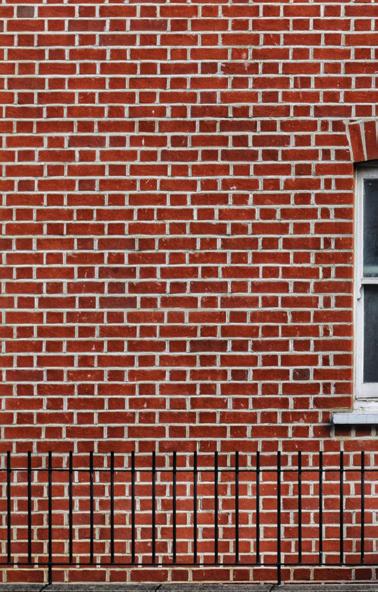
they’re looking for a physical or virtual experience.”
Another reason operators are flexing their online presence today is because a mainstay of traditional leasing efforts—foot traffic—has for the most part been stripped from their toolbox.
“Walk-in traffic is all but nullified,” Washington says. “So you really need to be able to correspond with prospects through multiple online channels, with content that gives them an experience. We want our prospects to come away from interactions with our online content not only informed, but connected to the community as well.”
OPTIONS FOR TOURS
Once those online and social media efforts drive prospective residents into your funnel, operators say it’s critical to meet them where they are mentally and emotionally while giving them the options to engage with you on their own terms.
“Our options for touring and leasing have really expanded,” says Lauren Campbell, Vice President, Asset Management, at Charlotte, N.C.-based Crescent Communities, which has developed more than 59 multifamily housing communities. “We really try to tailor them to that prospect’s comfort level with in-person contact.”
While some firms have resumed in-person tours where possible—with social-distance protocols in place—many potential renters today are still opting for a virtual tour first, not just for safety but as part of their process of elimination. “A lot of potential tenants are using virtual tours to help narrow down their options and then following up with a self-guided or in-person showing,” says Aaron Galvin, CEO of apartment brokerage firm Luxury Living Chicago Realty. “I think that’s going to continue even after COVID. Especially for people relocating to a new city, it’s just more efficient.”
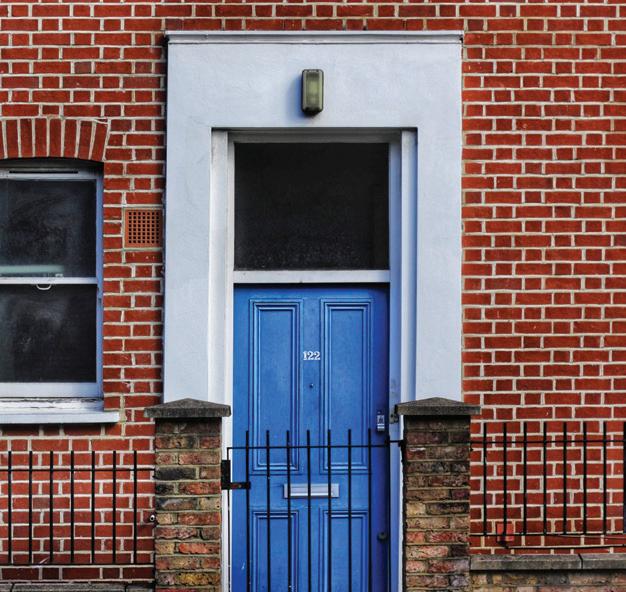
THE KEY IS TO GIVE THEM OPTIONS
“We’re offering a lot more options: Virtual, self-guided and in-person, socially distanced tours,” says Lee Ann Edwards, President at Boca Raton, Fla.-based Altman Management Co., which runs 8,000 apartments. “We’re also giving them better websites and strategies to make it easier for them to lease—texting, chatbots, Facetime, live feeds, social media, you name it.”
At Carlstadt, N.J.-based Russo Property Management, which operates 2,100 apartments, President Adam Pasternack is taking the all-of-the-above approach as well. “Today’s environment is still very much a hybrid,” he says. “We are actively inviting prospects into our communities and leasing offices, but doing it while adhering to all the proper protocols.”
MAKING THE CONNECTION
Once prospective residents commit to a tour, whether virtual, self-guided or in person, operators say that you have to do everything in your power to make a personal connection, despite Plexiglass sneeze guards, masks or whatever other barriers come in between you and them.
The reason? Many prospective residents are still unsure about what the future holds in the near term, says Caudell, “so it feels like a big commitment to sign a 12- or 15-month lease. You’ve really got to be attentive to their questions and proactively address their concerns—not just by telling them how you operate, but by showing them.”
Showing them includes making sure required cleanings are happening multiple times a day at apartment communities—which has become table stakes for prospective residents today. “They want to see staff wiping down surfaces and paying special attention to high-traffic areas like the pool,” Scaccia says.
They also want to know that you’re staying on top of protocols, enforcing mask requirements and observing social distancing when interacting with residents and prospective residents alike, even if it’s uncomfortable to do so.
For example, Galvin says prospective residents today have a keen eye, whether online or in person, and are constantly scrutinizing how closely communities adhere to the pandemic’s new social order. “Nearly every renter wants to know what precautions are being taken to ensure health and safety at a property,” he adds. “On tours, they notice the number of sanitizing stations, signs in elevators and in hallways about social distancing, and whether people wear masks. A lot of prospects get concerned if a pool has too many people at it.”

PITCHING AMENITIES
At the start of COVID-19, amenities went from being enticing to problematic as residents complained that they were paying for features they couldn’t use. But now, more than seven months after initial shutdowns, observers say the drawing power of amenities has reasserted itself with prospective residents—if you operate them in the right way.
“How you’re managing amenities is important information to share,” says BH’s Washington. “Prospects look at it as an indication of how well-organized and well-run the community is.”
So you need to share exactly how you’re scheduling admittance to amenities for residents, and how often.
“Prospects really want to know how you’re prioritizing access to those areas during COVID-19,” says Bainbridge’s Scaccia. “Early on, we partnered with our vendor to create an efficient sign-up system that’s available through our portal. It makes sure as many residents as possible can use the amenity, while monitoring capacity. It also lets us thoroughly clean that area between visits.”
EMPHASIZING WHAT THEY’RE LOOKING FOR
Other areas that catch prospective residents’ attention today include the amount of outdoor space a community has—both in common areas and with apartments’ balconies and patios.
“Balconies and outdoor spaces have always been big s ellers, but since the beginning of the pandemic, they’ve become even more desirable,” says Kim Boland, Director of Digital Marketing at King of Prussia, Pa.-based Morgan Properties, which operates 75,000 apartments. “When stay-at-home orders went into place, people used their balconies and outdoor spaces as freedom from the indoors to relax and get fresh air.”
But space where residents can get away from others inside their apartments is increasingly important as well. “Since most employers are still doing work from home, renters are looking for affordable apartments with additional space to work,” Boland says. “It’s a real bonus if that space is separate from where they sleep.”
Indeed, while many operators say their leasing velocity has actually held up or even improved during the pandemic, the types of apartments that prospective residents seek has evolved.
“Unit preference is the thing that’s really changed,” says Crescent’s Campbell. “Apartments that include work-fromhome spaces are in demand. It could be a thoughtfully placed desk in a one bedroom, a den or even renting a smaller two bedroom so they have that space.”
REAL ESTATE’S NEW MANTRA: “THREE TIMES THE FOLLOW-UP”
Another big change has come in what prospective residents have been doing once the tour is over. Whereas real estate’s traditional thrice-uttered mantra about location still rings true, for multifamily housing professionals on the front lines of virtual leasing, another truism has entered their lexicons: Follow up, follow up, follow up.
“We’ve increased our follow-ups with prospects,” says Barry Saywitz, President of the Newport Beach, Calif.-based Saywitz Co., which operates 1,000 apartments. “With our serious prospects, we’re being diligent with staying in touch to try to make deals as quickly as possible. That means processing of their applications and running credit expeditiously to avoid any opportunity for them to look at other options or change their mind.”
At Bainbridge, Caudell encourages her team to use any follow-up contact as an opportunity not only to close the lease but to show prospective residents the attention they’ll get once they move in.
“It’s so competitive right now, it’s critical to not only follow-up with prospects and build those relationships, but also to make clear that you’re there for them every step of the way,” says Caudell. “Virtual or not, it’s about the connection that prospect feels. Being attentive to their questions and proactively addressing common concerns makes all the difference.”
Caudell’s team has been leveraging email follow-ups with a link to the actual recorded virtual tour they went on so they can easily review it again.
For Campbell at Crescent, it comes down to providing what she calls “extreme customer service” after the tour. “Our teams are spending a significant amount of time on
follow-up with each individual tour,” she says. “The most significant trend we’ve seen among prospects since COVID is an actual craving for connection. They want empathy. They want reassurance. They want individualized attention. We are really trying to show them the onsite team is going to go the extra mile.”
But most of all, they need personal contact.
“There are just some things that can’t be replicated through a virtual experience,” says JoLynn Scotch, Managing Director of Operations at Greenbelt, Md.-based Bozzuto Management Co., which operates 71,000 apartments. So, onsite teams must communicate more than ever with prospective residents to answer questions like, “How far is my apartment from the elevator?”
“There’s just more follow-up required in virtual leasing, which is ultimately a good thing,” adds Scotch.
GETTING TO CLOSE
Once you’ve given prospective residents everything they need to make a decision, it’s still up to you to make sure their next move is signing a lease—with you. To get to that goal, operators say you really need to tell them why the community is a good fit for them. Of course, to do that, you need to have engaged with them and heard their specific needs from the start.
“Closing techniques that acknowledge that prospect’s specific needs and how the community effectively meets them are what’s most effective now,” says Washington. “You can’t just recap what the community offers, because that leaves a chance for uncertainty. You want to reassure them it’s a good fit.” But you can’t just focus on relationship building and your staff’s individual interaction with prospective residents either. Online reputation management was already critical to successfully operating an apartment portfolio. Now it’s even more important.
“Since a precedent for apartment hunting and leasing in a pandemic does not exist, prospects are trusting and relying on the recent experiences of other individuals in similar circumstances even more,” Washington says. “Reviews really shine a light on your community—or dim your chances.”
Savvy operators recommend managing your community’s reputation online by addressing any negative comments in a constructive way, and doing what you can to encourage current residents to carry the online torch for you in the form of positive reviews.
INCREASED MOMENTUM FROM DIGITAL INTERACTION
One of the positives to come out of COVID, operators say, is that even though the new environment demands more from leasing staff in order to close, the implementation of so many digital tools across the industry has actually sped up the pace of leasing for some apartment operators.
“We’ve had a lot of success offering a completely digital process, from viewings to contracts, that has actually allowed us to accelerate closings,” says Ron Melendez, Vice President of Development at the Miami-based Related Group, which has built and manages over 100,000 residential apartments. “New residents have a completely digital experience when processing their leasing documents, payment and contract.”
For Boland at Morgan Properties, that’s one of the bright spots to come out of the chaos of 2020. “Even though the pandemic has significantly changed the leasing environment, this has only encouraged property managers to prioritize the use of technology,” she says. “That was already happening, of course, but the pandemic really expedited it.”
STILL KEEPING AN EYE ON SCREENING
None of this means that pros are renting to just anyone today. Indeed, with some operators reporting more instances of application fraud since the start of the pandemic, the more background information you have on prospective residents, the better. It’s important to keep the fundamentals of leasing in mind—by attracting and building rapport with well-qualified renters. Don’t avoid the increased challenges of leasing today by kicking the can further down the road and accepting residents who will create a collection problem later on.
“With the combination of new rent-control laws, moratorium on evictions and higher concern for the spread of COVID, you need to make sure you’re renting to new residents who can actually qualify and pay the rent,” says Saywitz. “It’s become increasingly difficult to remove problem tenants, so you’ve really got to be careful with your decisions on the front end.”
By engaging with prospective residents where they are, giving them the options they want for tours and paying attention to their unique needs, multifamily housing operators can succeed when navigating today’s leasing environment.
Source: Joe Bousquin, “Closing Apartment Leases During COVID-19,” Units Magazine November/December 2020, www.naahq.org/news-publications/units/november-2020/ article/closing-apartment-leases-during-covid-19

THE ABCs of GEN Z
How property managers can reach them first.
By Yardi Breeze
Here’s something you might not know: The DON’T FORGET ABOUT GOOGLE oldest renters in Generation Z turn 25 in Google is the most popular apartment-finding tool. Accord2021. That’s a significant marker, as it’s a ing to the survey, 39% of Gen Z renters start their apartment time many young people will be leaving the search on Google — that’s more than any other age group. To nest, renting apartments and advancing make sure your properties are easy to find on this search entheir careers. In fact, by the end of the decade, the number gine, you may need one or more tools at your disposal: of Gen Z renters will grow to about 55 million.
Generation Z renters will affect property management • Online search engine marketing (SEM) ads that appear in a big way, and your competition is already competing for at the top of your search results. their attention. We used a survey from our friends at RENT• A professionally designed website for your businesses Café to see how Gen Z is making waves in the rental industry. and possibly individual properties (Yardi can even THIS ARTICLE COVERS THE WAYS GENERATION Z: • Uses social media • Uses technology in their living spaces • Checks online ratings and reviews • Looks for a balance between quality and affordability But Google isn’t the only way people are finding apartments online … Second in popularity are apartment search websites such as RENTCafé.com. These sites are used by 27% of Gen Z apartment hunters.
If you understand how this generation thinks, you’ll Pro tip: Yardi Breeze and Yardi Breeze Premier users get be able to reach them before your competition. Let’s get free access to RENTCafé. This makes it easy to syndicate started. your listings across other major sites as well.
GEN Z RENTERS ARE FOUND ON SOCIAL MEDIA
Instagram is an increasingly popular social media channel, and Gen Z is leading the way. As indicated in the RENTCafé survey, 36% of Generation Z says Instagram is their favorite media channel (followed by 17% who prefer Facebook).
Interestingly, all other age groups prefer Facebook. This is evidence that property management businesses should have a marketing presence across multiple social media channels. That’s the only way to ensure as many people as possible see your properties. build sites for you).
TECHNOLOGY IS CENTRAL TO THEIR CHOICE OF HOUSING
According to RENTCafé, 62% of Gen Z renters rank apartment technology as being either very important or extremely important. And the number one feature they requested could be one of the easiest amenities for you to install: highspeed internet.
So, while parking spaces, fitness areas and on-site laundry facilities matter to Gen Z, it’s good internet that remains the biggest draw.
NEW TO SOCIAL MEDIA? No sweat! We can show you how to get social media followers: www.yardibreeze.com/blog/2019/11/how-propertymanagers-can-get-social-media-followers/
And don’t miss these social media do’s and don’ts: www.yardibreeze.com/blog/2018/07/7-social-mediados-donts-for-property-managers/

Other techy offerings matter to Gen Z as well: • Smart locks (great for self-guided property tours) • Wi-Fi controlled thermostats • Energy-efficient appliances • Online and text-based rent payments • Mobile-friendly maintenance requests
PROPERTY RATINGS & REVIEWS MATTER
Gen Z renters are avid readers of online property reviews. So, once they see your ad on Google or find you on social media, their next move is to gather information from current and former renters.
Getting positive property reviews takes a little work on your end. People rarely need to be prompted to write a negative review, which sometimes makes it easier to collect bad reviews than good ones.
But don’t panic!
There are many opportunities to ask a resident to leave a review. Did you complete a maintenance task in a timely manner? Ask for a review. Did you work with them on rent assistance or some other problem? Ask for a review. You might be surprised how willing people are to help you out.
Pro tip: Never request a positive review. That can sound pushy. Instead, use neutral language but choose opportunities to ask when of course the review will be positive.
THERE’S A SWEET SPOT FOR QUALITY & AFFORDABILITY
It should come as no surprise that price matters to Gen Z renters. Even the oldest ones are still in the early stages of their careers, so affordability will be top of mind. However, no one wants to live in a room that feels like a dimly lit closet.
In other words, quality matters. The RENTCafé survey indicates Gen Z renters care more than other generations about the quality of their apartment and the quality of the building.
Continue to survey your residents to find out what features and amenities they’d like to see.

FINAL THOUGHTS
As Gen Z’s earning and spending power increases in the years to come, we might see a new type of renter: a group of tech-savvy, research-focused, confident individuals with money to burn.
Won’t that be something?
Adapted from “Gen Z Renters: How Property Managers Can Get To Them First,” Jan. 8, 2021, www.yardibreeze.com/blog/2021/01/ gen-z-renters-how-property-managers-can-get-to-them-first/
